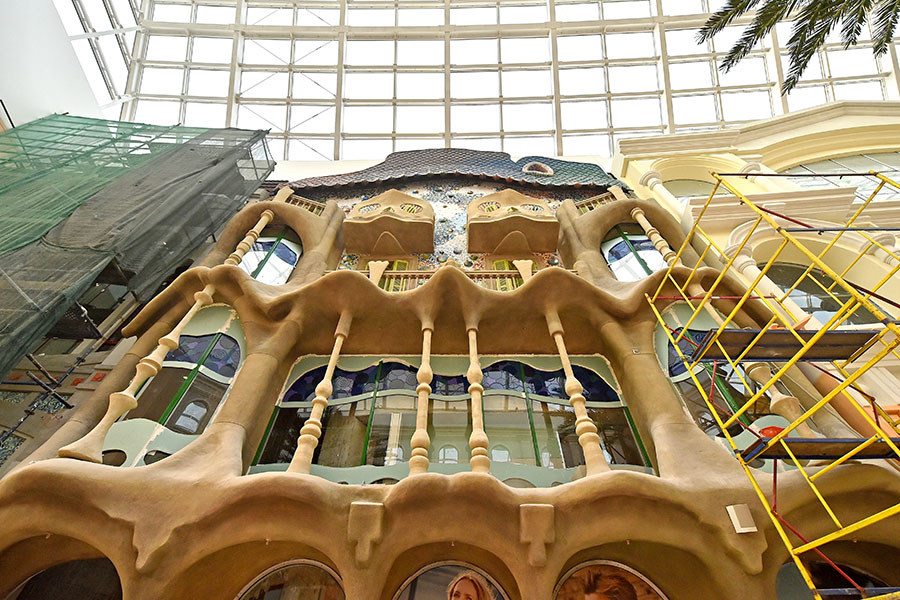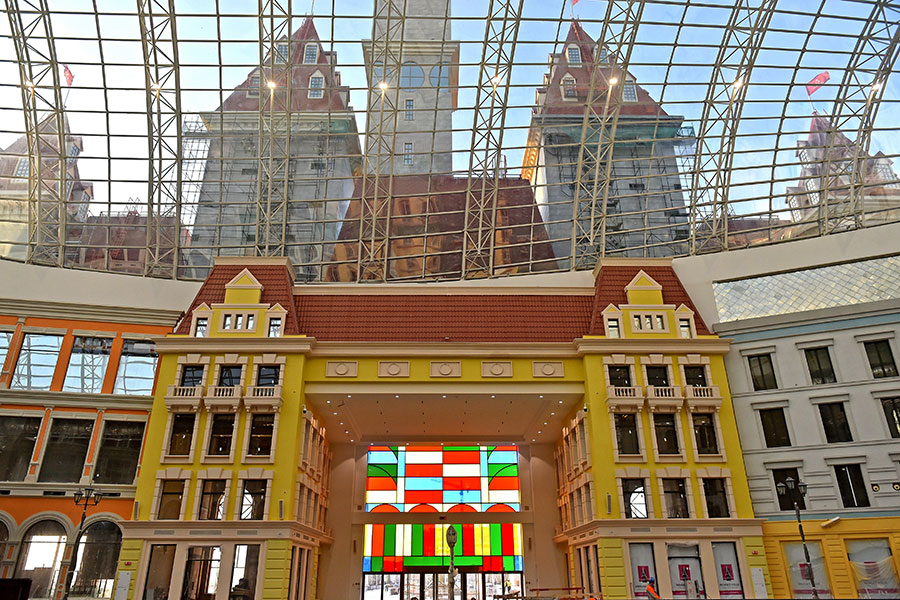The clock is ticking. Phase one of the 100-hectare Dream Island development in Moscow is approaching completion. The world’s largest indoor theme park, with 300,000 sq m of entertainment space, is scheduled to open in the first quarter of 2020. Expected to be visited by 50 million people annually, the project has been designed as the first large-scale leisure destination in Russia.
In addition to the all-season indoor theme park, the river-fronted scheme will comprise a 44 ha landscape park with outdoor leisure facilities, a 4-star hotel, a concert hall, children’s yacht school and numerous F&B options. The Dream Island theme park has a “wonderland”-style design theme, with a concept design based on historic Kremlin architecture as well as Western European Gothic architecture.

The concept combines domestic and foreign heroes from cartoons and fairytales, and includes characters that were created especially for the project by Russian artists. The park is divided into 8 themed zones, including “Hotel Transylvania” (populated by characters such as Dracula, Frankenstein, the Invisible Man and others), the area of Dino Land inspired by the ruined cities of the South American Indians with various attractions such as the flying theatre that takes you back in time and shows the lost world of dinosaurs. Other areas are also inspired by fairytales from around the world.
Architects Chapman Taylor created the masterplan concept for this massive project, which will cater millions young people in the Moscow area as well as visitors from far and wide. The development is being built with full support from both the government and the public.
The concept for the indoor element of Dream Island and the landscape park was developed by Cunningham Architects and Land Milano respectively, both of which are large, international amusement parks specialists.
FIFTY MILLION VISITORS EXPECTED ANNUALLY
Dream Island is a key urban development project, aimed at making the Russian capital more attractive for investments and creating new jobs. It is expected to become one of the most visited tourist attractions in Moscow, along with the Kremlin, Gorky Park, and the Exhibition of Achievements of the National Economy (VDNH). It is expected that fifty million visitors will visit the Dream Island during its first year, increasing tourist flows to the city by an estimated 16%.
The project will be easily accessible; the new “Technopark” metro station has already been built near the park, and a pedestrian overpass with travellators from the metro station to Dream Island over Andropov Avenue opened in July 2019. Motorists can get from the TTR to the park in just three minutes, and from the Kremlin in only 10 minutes.
Credit: Dream Island
NOT A RUSSIAN DISNEYLAND
The operators strongly emphasize that this project is not a Russian version of Disneyland. Dream Island does not feature any Disney characters. However, it will include licensed characters from other partners, including Sony Pictures Animations Inc. (Hotel Transylvania), IMPS S.A. (The Smurfs), Viacom International Media Networks (Teenage Mutant Ninja Turtles), and Sanrio GmbH (Hello Kitty). What’s more, Dream Island will present its own characters, created by the Dream Island Holding Company LLC and the shareholder of the company Amiran Moutsoev.
DREAM ISLAND’S FACTS & FIGURES
- 100 ha: land plot area (equivalent to 140 football fields)
- 300,000 sq m: total area of the indoor part (equivalent to 42 football fields)
- more than 35 attractions for adults and children across eight zones, including 27 digital and mechanical rides
- 44 ha: landscape park area
- 3,500: number of seats in the multifunctional concert hall
- 17: number of screens in the movie theater
- more than 3,000: number of parking spaces
- 2 km: length of the developed embankment, with a yacht school for children
- 410: number of rooms at the 4-star hotel
- 50 million: number of visitors expected in the entire complex in the first year
- 7,5 million: number of guests of the indoor theme park expected in the first year
- 7: number of glass domes at the park (four small ones will be located in the gallery area and three large ones in the atrium zone. The total area of these domes will exceed 28,000 sq m. The central area will be 8,600 sq m, with a height of 35 meters. This is two-and-a-half times larger than the Norman Foster dome over the Reichstag and several times larger than the dome at Galeries Lafayette in Paris.)












